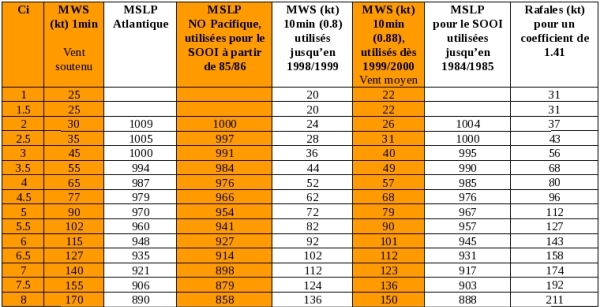
Empirical relationship between the Dvorak intensity, the maximum wind speed (kt) and the minimum pressure (hPa) for the tropical systems.
Data from the "Global Guide Tropical Cyclone forecasting" (report TCP-31) for the four first columns, and from the Cylone Season 1984/1985 and Cyclone Season 1999/2000.
Dvorak scale used in the South-West Indian Ocean